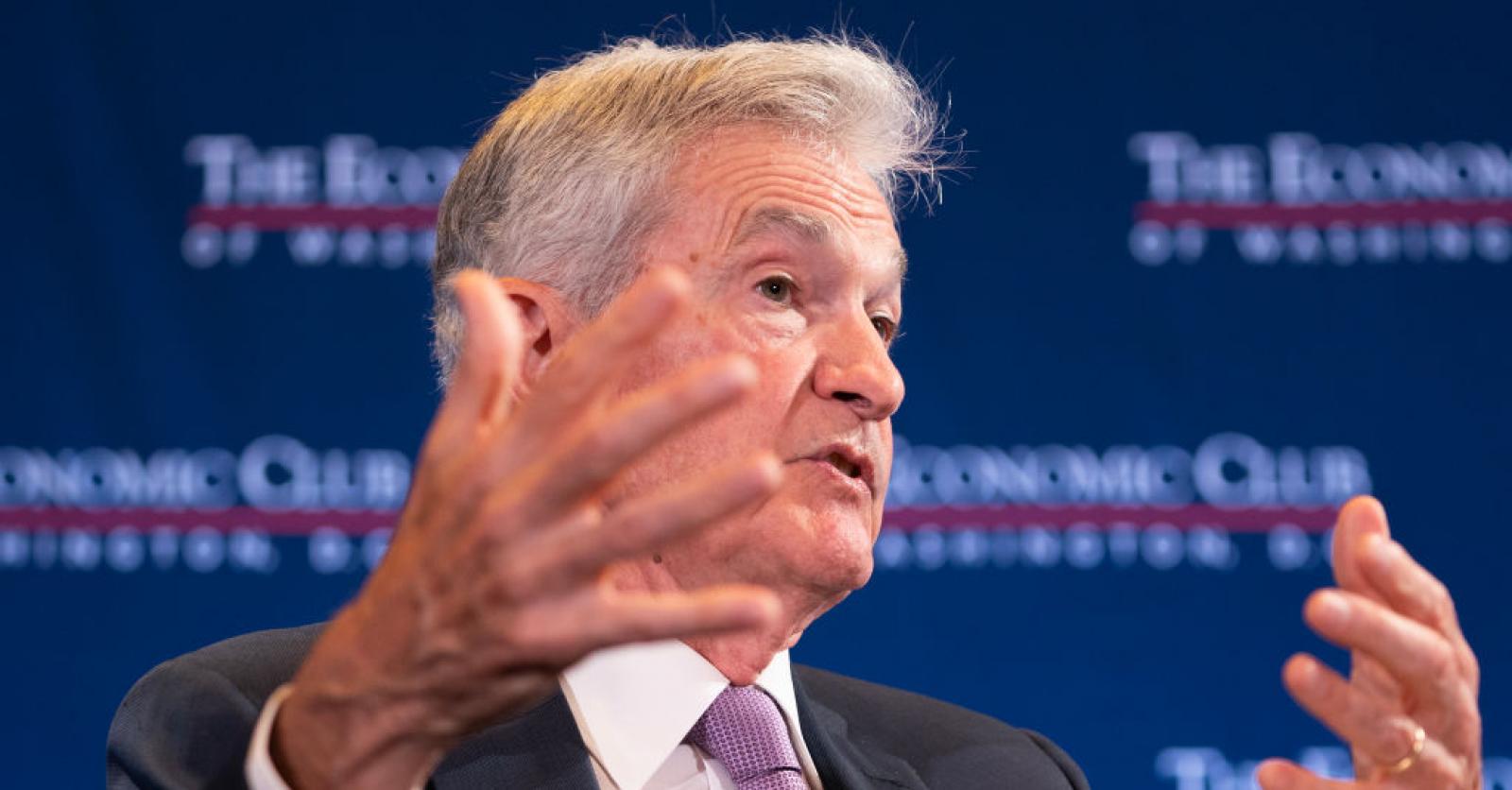he is interest rate cuts expected in the United States caused the dollar to fall on the currency markets on Friday. This caused the euro to rise briefly to $1.1196, the highest level since last July. How will the money markets enter the fall? We asked expert Joost Derks (iBanFirst).
How will Fed Chairman Jerome Powell’s comments about rate cuts in September affect expectations for the dollar in the short and medium term?
JOOST DERKS. “Jerome Powell said at the meeting in Jackson Hole that the Federal Reserve is considering cutting interest rates in September. This confirms what the market has been expecting for some time. In the short term, the news leads to a weakening of the dollar as lower interest rates reduce the attractiveness of US assets. Investors now expect a 25 basis point cut with about a 63% chance, and a 36% chance of a 50 basis point cut. In the medium term, the movement of the dollar depends on how the economic situation in the United States improves compared to other regions. Although US inflation has fallen, it is still slightly below 3%, which is still above the 2% target. The labor market is showing signs of cooling, giving the Fed some room to cut rates without overheating the economy. However, US economic growth remains relatively strong compared to other regions, which could support the dollar in the medium term. “
What are the risks to the dollar if the market expects the Fed to cut rates by around 100 basis points by the end of the year?
DARK. “That could have a big impact on the value of the dollar. Such a rate cut would further reduce the attractiveness of US assets, which could lead to capital outflows from the US. In addition, a weaker dollar could create inflationary pressures by increasing the cost of imported goods. That could fuel inflation and harm economic growth, especially if the US economy becomes more vulnerable to higher import costs. “
Which currencies will benefit the most from the weakening of the dollar?
DARK. “Currencies such as the British pound and the euro are currently benefiting the most from the weakening of the dollar. The pound has recently gained strength on better-than-expected economic data from the UK, such as positive retail sales and a strong labor market. It seems that the Bank of England does not want to cut rates as quickly as the Fed, which will give the pound a boost against the dollar. In addition, the euro also benefits from the weak dollar, although the continued economic weakness in the euro area limits these benefits. Currencies such as the Australian and New Zealand dollars are also becoming more attractive to investors due to their high interest rates and strong commodity prices, offering them better returns against the US dollar.”
‘A global downward spiral in interest rates would only occur if all major economies faced similar economic challenges at the same time’
Joost Derks (iBanFirst)
How are geopolitical tensions and trade disputes affecting currency markets?
DARK. “Geopolitical tensions and trade disputes have traditionally had a major impact on currency markets. The dollar often acts as a safe haven during times of global uncertainty, which usually leads to an increase in demand for the dollar. Currently, the market appears to be underestimating geopolitical risks, as evidenced by the relative stability of the dollar and other safe havens such as the Swiss franc. However, if tensions rise, new demand for the dollar could quickly emerge, causing its value to rise. This makes the situation unpredictable and emphasizes the importance of a flexible strategy in cash investments.”
With the decline in long positions in the derivatives market, how can hedge funds and other large investors respond to dollar market movements?
DARK. “Hedge funds and other large investors are likely to review their positions in response to the Fed’s expected interest rate decisions and the associated volatility in currency markets.” They may decide to short the dollar, or hedge against another downturn by investing in better performing currencies. Hedge funds should also consider the impact of changes in interest rates on carry trades and prepare for them by adjusting their positions in good time. In addition, a decline in long positions in the derivatives market could indicate less optimism about the dollar, which could prompt hedge funds to adopt defensive strategies.”
Race to the bottom
DARK. “Trading strategies greatly influence interest rate expectations because these strategies revolve around borrowing in low-interest-rate currencies and investing in higher-interest-rate currencies . With the expected interest rate cuts by the Fed, the US dollar is less attractive for carry trades. Investors would be more likely to choose currencies such as the Japanese yen and the Swiss franc as funding currencies because of their traditionally low interest rates. On the other hand, currencies such as the Australian dollar and the South African rand remain attractive for carrying trades due to their higher interest rates. As long as interest rate differentials remain wide enough, these currencies will benefit from trading strategies.”
Read more under the link:
What is the risk that an aggressive policy of rate cuts by the Fed will lead to a ‘race to the bottom’ of global interest rates?
DARK. “That’s unlikely. Central banks strive to be independent and adapt their monetary policy to the specific economic conditions of their own country. A global reduction in interest rates would only occur if all major economies faced similar economic challenges at the same time. Given the current differences in economic performance and inflation targets, such a scenario is unlikely. However, investors should be aware of policy changes that may affect the global interest rate market. “
2024-08-26 14:09:02
#interest #rate #cuts #weigh #dollar #currencies


